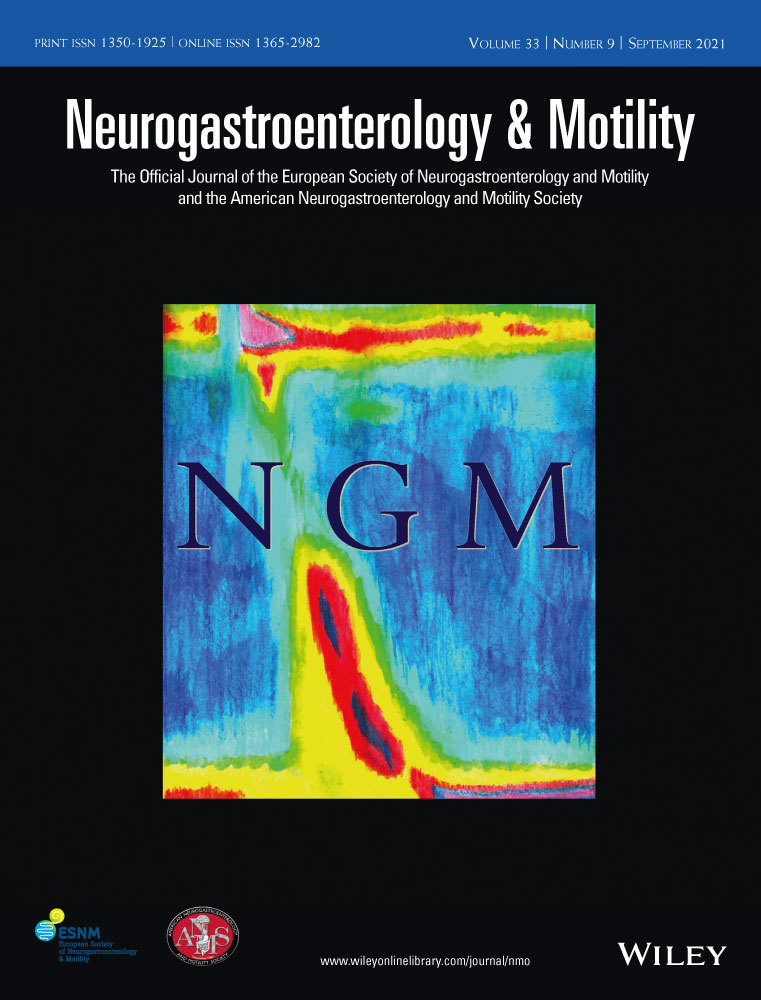Role of enteric dopaminergic neurons in regulating peristalsis of rat proximal colon
Funding information
The present study was supported by a research grant from The Nitto Foundation and Grant-in-Aid for Research in Nagoya City University (No. 1913028 and 1943004) to HN.
Abstract
Background
Constipation is commonly seen in patients with Parkinson's disease associated with a loss of dopaminergic neurons in both central and enteric nervous systems. However, the roles of enteric dopaminergic neurons in developing constipation remain to be elucidated. Here, we investigated the roles of enteric dopaminergic neurons in the generation of colonic peristalsis.
Methods
Cannulated segments of rat proximal colon were situated in the organ bath, abluminally perfused with physiological salt solution and luminally perfused with 0.9% saline. Drugs were applied in the abluminal solution. Changes in diameter along the length of the colonic segment were captured by a video camera and transformed into spatio-temporal maps. Fluorescence immunohistochemistry was also carried out.
Key Results
Blockade of nitrergic neurotransmission prevented oro-aboral propagation of peristaltic waves and caused a colonic constriction without affecting ripples, non-propagating myogenic contractions. Blockade of cholinergic neurotransmission also prevented peristaltic waves but suppressed ripples with a colonic dilatation. Tetrodotoxin (0.6 μM) abolished peristaltic waves and increased ripples with a constriction. SCH 23390 (20 μM), a D1-like dopamine receptor antagonist, slowed the peristaltic waves and caused a constriction, while GBR 12909 (1 μM), a dopamine reuptake inhibitor, diminished the peristaltic waves with a dilatation. Bath-applied dopamine (3 μM) abolished the peristaltic waves associated with a colonic dilation in an SCH 23390 (5 μM)-sensitive manner. D1 receptor immunoreactivity was co-localized to nitrergic and cholinergic neurons.
Conclusions and Inferences
Dopaminergic neurons appear to facilitate nitrergic neurons via D1-like receptors to stabilize asynchronous contractile activity resulting in the generation of colonic peristalsis.
CONFLICT OF INTERESTS
The authors have no competing interests.
Open Research
DATA AVAILABILITY STATEMENT
The data that support the findings of this study are available on request from the corresponding author.




